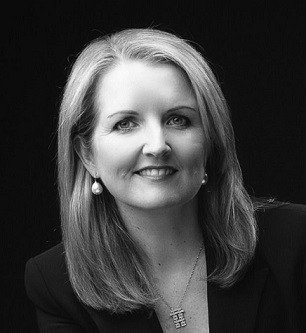Time Well Spent: How Influential Leaders Balance the Past, Present and Future

Freepik
Henry David Thoreau once asked, “It’s not enough to be busy, so are the ants. The question is, what are we busy about?”
In today’s hyper-connected, always-on world, the answer to that question has never been more essential. The professional norm around constant availability often equates value with visibility and busyness with commitment.
But influence is not measured by how fast you respond to a late-night message. It is measured by the quality of your presence, the clarity of your perspective, and the intention behind your choices.
That means rethinking how you use your most finite resource: time.
We have many ways of thinking about time. For example, we often use money as a metaphor for time, and so we talk about ‘spending time’, ‘wasting time’, ‘investing time’ or being on ‘borrowed time’.
The logic is that once time has been spent, you can’t get it back. You can’t spend ‘future’ time because you can’t spend what you don’t have. If you follow that line of reasoning, it is the present that you should be most concerned with. Why? Because it is the only present time that you can be certain you have.
That perspective feels a little too bleak for me.
Rather than seeing time as a linear sequence or a currency to be traded, I prefer to see it as a triangle. One where each corner — the past, the present, and the future — holds insights and opportunities.
It is the leaders who can balance all three who influence with greater wisdom and impact.
Read: Too Fast or Too Slow? Why Influential Leaders Know How to Set the Right Pace
Look Back: Reflect on the Past, Don’t Dwell in It
The past is a teacher. It holds the data of our decisions, the memories of our mistakes, and the seeds of self-awareness.
Influential leaders utilise the past as a source of learning, not a place to camp out in. Reflection helps build narrative coherence. It allows us to make sense of our experiences, test our assumptions, and gain clarity on what drives us.
But there is a fine line between reflecting and ruminating. When we ruminate, we don’t reach a conclusion; we keep replaying the same scenario over and over again, hoping for a different outcome.
When we reflect, we give our brain time to pause and examine the scenario from multiple angles.
Over time, our perspective can change, too.
In listening to Bono being interviewed by Dr Brené Brown on her podcast Unlocking Us, he references the iconic Frank Sinatra ballad “My Way.” He mentions how “the same song, sung twenty years later, carries a different meaning”.
When it was first recorded in the 1950s, it came across as bold and boastful – “I did it my way”. But, looking at it two decades later, the same lyrics had taken on a tone of reflection, almost an apology. Nothing changed in the arrangement or key. What changed was the perspective. Age, experience, and hindsight reframed the meaning.
That is what reflection does. It shifts not only how we view our past, but also how we relate to others in the present.
The past isn’t fixed; it evolves as we grow and change. Influential leaders reflect not just on what happened, but how their understanding of it changes over time
Try this:
- Schedule weekly reflection time. Ask yourself: What worked? What didn’t? What did I learn?
- Identify recurring themes in your past decisions. What core belief may be shaping them?
- Use journaling or discussion with a trusted colleague or executive coach to externalise your thinking.
Be Here: Stay Grounded in the Present
In a world full of alerts, meetings, and competing demands, staying present can feel like a luxury. It’s not. It’s a leadership necessity.
The present is where action happens. It is where influence is felt, relationships are built, and progress is made. Yet too many leaders fall into one of two traps — either being so reactive that they fail to plan ahead, or so task-focused that they forget to tune in to the human element of leadership.
Presence is not about perfection. It is about attunement. When you are fully present, you signal respect. You notice what is not being said. You make better decisions because you are not jumping to conclusions.
Being present with yourself matters too, because the way you relate to your work has a significant impact on your long-term wellbeing.
Research by Social Psychologist Robert Vallerand distinguishes between harmonious passion, where work is fulfilling and aligned with your core values, and obsessive passion, where work begins to dominate your identity. Leaders who cultivate harmonious passion are more likely to sustain performance, feel engaged, and build resilience. Those driven by obsessive passion, however, are at greater risk of overwork, burnout, and diminished influence over time.
Try this:
- Start meetings with a moment of check-in. Ask: What is most important for us to focus on today?
- Spend time in nature or engage in short mindfulness exercises. These practices help lower cortisol levels and enhance cognitive performance.
- Set clear boundaries around work hours. Not just for yourself, but to model sustainable behaviour for your team.
Look Ahead: Plan for the Future, Don’t Race Toward It

Freepik
Leaders who influence at scale think beyond the now. They scan the horizon, anticipate trends, and prepare for disruption. They shape change, rather than just react to change.
Adopting a future-focused approach helps generate valuable insights. It creates space to align your goals with larger social and organisational shifts. It also ensures that you are not simply chasing urgency but moving with purpose.
Yet, when taken to the extreme, being future-focused becomes fixation. It leads to anxiety, disconnection, and a perpetual state of “I’ll be happy when…”
Balance means having enough of a vision to inspire movement, without becoming enslaved to it.
Try this:
- Dedicate time each month to horizon-scanning. Ask: What changes are occurring in my industry, team, or customer base?
- Define long-term goals but revisit them quarterly. What is still relevant? What needs to evolve?
- Involve others in visioning exercises. Collective foresight builds ownership and agility.
The Leadership Time Triangle
Which of those elements do you spend the most time on?
Are you dwelling on the past?
Are you so focused on the present, you don’t plan for the future?
Or are you so fixated on the future that you don’t know how to enjoy the present?
Balancing time is not about achieving perfect equilibrium every day. Some days will demand urgency. Others will call for deep reflection. What matters is that over time, you develop the discipline to flex between all three.
This is the leadership dance between then, now, and next, so you can…
- Mine the past for wisdom.
- Show up in the present with intention.
- Shape the future with foresight.
Through it all, you influence not just with action, but with awareness. When it comes to time, the most influential leaders do not just manage it; they honour it.
Republished with courtesy from michellegibbings.com.
Step Into the Room Where Leaders Grow
Leadership
Tags: Mindfulness, Alignment & Clarity, Be A Leader, Executing Leadership
Michelle Gibbings is a workplace expert and the award-winning author of three books. Her latest book is 'Bad Boss: What to do if you work for one, manage one or are one'. www.michellegibbings.com.






